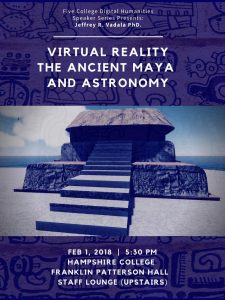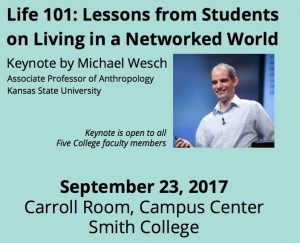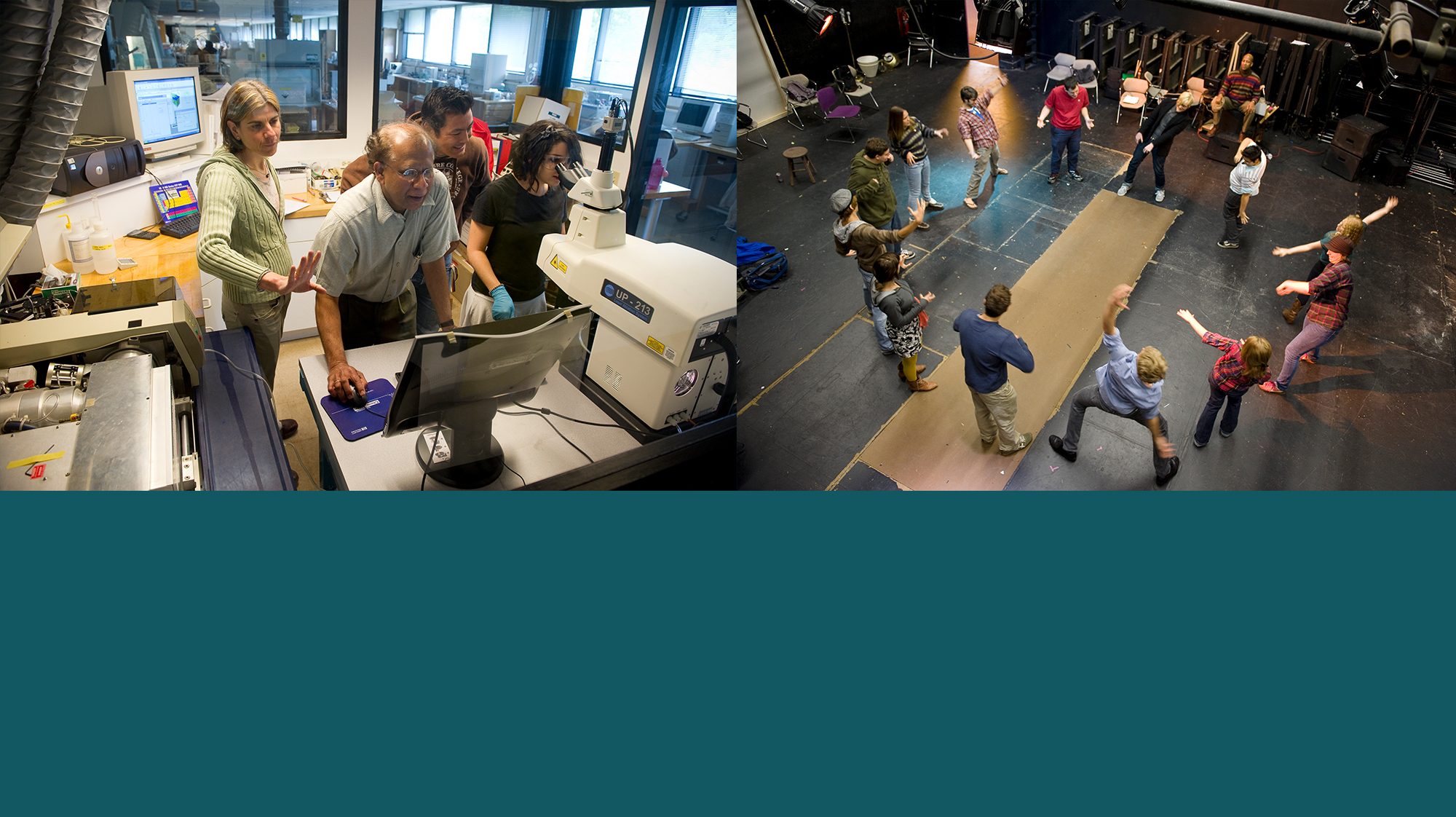The CTL has created some resources to help you develop the best collaboration with your TA or TA’s. Some tips for imagining and negotiating their roles – the “Teaching Assistants” page is under “Teaching Resources.”
Ideas for Class Activities

This column from Chronicle Vitae includes some great classroom activities that help you find out what students already know and what they understand from the reading. These activities also help students make connections across readings and to be prepared for class discussions.
Share Your Research on Public Radio
AAC&U President Lynn Pasquerella is host of the radio segment The Academic Minute, produced by WAMC Northeast Public Radio in partnership with AAC&U. The Academic Minute features faculty and researchers from colleges and universities around the world discussing what’s new in the academy and the ways in which academic research contributes to serving the public good. In addition to being broadcast widely on radio stations around the country, each segment is posted daily on Inside Higher Ed and across The Academic Minute’s and AAC&U’s social media portals.
The Academic Minute is seeking individual submissions for upcoming segments on any topic, and campuses are also encouraged to submit ideas for “weekly takeovers” featuring five separate research segments from a single institution. Recent weekly takeovers featured research from Whitworth University, Cornell College, Lafayette College, and Purdue University (upcoming).
Please send submissions to David Hopper at dhopper@wamc.org, and be sure to tune in daily to The Academic Minute. Thank you for considering this opportunity for public engagement.
Five College Digital Humanities Speaker Series
 The Five College Digital Humanities Program is pleased to announce that Dr. Jeffrey R Vadala, one of our Postdoctoral Fellows in Blended Learning and Digital Humanities, will be continuing our Five College Digital Humanities speaker series.
The Five College Digital Humanities Program is pleased to announce that Dr. Jeffrey R Vadala, one of our Postdoctoral Fellows in Blended Learning and Digital Humanities, will be continuing our Five College Digital Humanities speaker series.
Dr. Jeffrey R. Vadala’s talk, “Virtual Reality, the Ancient Maya, and Astronomy” will be given on February 1, 5:30 PM at Hampshire College in Franklin Patterson Hall in the Staff Lounge (upstairs). This event is open to the public.
Among New and Old World ancient societies, the ancient Maya are known to have one of the most complex and precise systems of understanding, tracking, and observing the flow of time. Using maps and mathematical calculations, archaeologists, art historians, and epigraphers have found that these temporal systems were developed through the use of architectural calendars. Over time, these constructions developed into monumental observatories that were used to track celestial phenomena and host political ritual events.
Primarily focused on functional elements of architecture, previous studies produced highly generalized interpretations without considering how ancient Maya people experienced and interacted with both the natural and built landscape’s that contextualized the locations of these observatories. Focusing on the human experience of both the built and natural landscape, this study uses computer modeled virtual reality (VR) 3D interactive simulations to explore how the Maya interacted with their local environment and produced local astronomical knowledge at the Preclassic site of Cerro Maya (formerly known as Cerros). Researchers used fully interactive virtual reality simulations of Cerro Maya to identify two previously unknown early Maya architectural solar alignments. Additionally, by considering how these architectural alignments were transformed as Cerro Maya grew from a small seaside village into a monumental trading center, VR simulations made it possible to explore how local history and astronomical knowledge were produced and experienced differently by the various competing social orders at the time. As astronomical knowledge developed alongside society at Cerro Maya, it would come to play an important role in the development of hierarchy and social organization. Beyond archaeology, this research demonstrates that virtual reality simulations can be a powerful analytical tool for digital humanities scholars that study or explore human landscapes both built and natural.
Contact Jeffrey Vadala at jvadala@hampshire.edu or learn more at www.jeffreyvadala.com
|
|
Five College Digital Humanities Speaker Series
 The Five College Digital Humanities Program is pleased to announce that Dr. Heather Richards-Rissetto from the University of Nebraska-Lincoln will be the first speaker to kick-off our Five College Digital Humanities speaker series.
The Five College Digital Humanities Program is pleased to announce that Dr. Heather Richards-Rissetto from the University of Nebraska-Lincoln will be the first speaker to kick-off our Five College Digital Humanities speaker series.
Dr. Richards-Rissetto’s talk, “Are We in the Present, Past, or Future? 3D GIS Explorations of Vision, Sound, and Movement in Ancient Maya Cities,” will be given on December 12th 5:00 pm in N255 at the Integrative Learning Center at UMass in Amherst MA.
Ancient Maya architecture worked in concert with the natural landscape to convey messages of political power, social differences, and cosmological beliefs. Temples, ball courts, palaces, and plazas offered sights and sounds to create synesthetic experiences that influenced daily life and shaped society. Geographic Information Systems (GIS) offer tools and methods to derive quantified and geovisualized data. Digital technologies such as photogrammetry, laser scanning and airborne LiDAR allow us to create 3D models of extant architecture within contemporary landscapes. But how do we simulate ancient cities rather than simply visualize present archaeological landscapes? 3D Modeling software affords us possibilities to reconstruct non-extant architecture but typically requires time-consuming manual modeling. An alternative—procedural modeling—applies “standardized” rules to rapidly generate 3D architectural models allowing simulations of ancient cities based on GIS data. Recent advances in immersive Virtual Reality (VR) allow us to bring these GIS and 3D data into VR environments for cross-disciplinary humanistic and scientific analysis. In this talk, I discuss how the MayaCityBuilder Project is using GIS and 3D data to explore sight, sound, and movement in eighth century Copan—today a UNESCO World Heritage Site in Honduras.
Find out more about Dr. Heather Richards-Rissetto’s work at https://www.unl.edu/anthropology/heather-richards-rissetto
Wrapping up the Semester
As the end of semester is rapidly approaching there are some things you can do to help it go smoothly. You can consider the ideas listed below. Add your own practices in comments section.
- Making sure you have communicated clear expectations for what students produce by the end of the semester and given them due dates. Check to see that:
- The descriptions/expectations for any final projects are clear
- Due dates are posted – are you expecting work to be due on the last class day or do you want students to do an additional edit or additional project work and hand in the final version after the last class? Remember, you have to tell CASA who will be receiving an evaluation by December 20th – so make your deadlines on or before that date!
- You are clear about whether students must hand in a portfolio of work. If so (this is common practice) make sure you are clear about what should be in it and when it is due
- You have given instructions, if you have them, for self-evaluations on TheHub. If you want to guide their self-evaluations, write and share guidelines/prompt questions (see page under Evaluations/Student Self-Evaluation under Teaching Resources on this site). You can also ask them to print out the self-evaluations and put it in the portfolio if you wish.
- Think about whether there are students who are in danger of NOT meeting your expectations. If so, you can email them and ask them to meet with you about what they have to accomplish in order to receive an evaluation. OR just email them with your concerns and alert them to the fact that you have made the expectations for evaluation clear/where to find them.
Class Participation
Most of us have explicit expectations for students that they participate in class discussion and we include statements about their participation in their evaluations. We know that despite our clarity and our imploring, some students participate in discussion and others are reticent. Many students receive the same feedback course after course and semester after semester, suggesting that they participate more actively. It seems clear that hoping they participate does not translate into participation. Is there anything we could be doing differently to increase the number of students who participate, the depth of their engagement, or the quality of their contributions?
Likely, a student’s degree of participation is rooted in a number of issues. Students often see a professor as the expert whose job it is to impart information; they might not realize that learning requires their participation or that participation is part of their commitment to the whole class. Alternatively, a student’s lack of participation might be related to low motivation, to shyness, to worry about how they will be interpreted by peers, or to incomplete preparation for class (which in itself is affected by many issues – time management, reading ability, etc.). We won’t know which of these is at issue for any one student without conversation.
Short of meeting with each student individually, as faculty we can consider ways to change the structure of our assignments and classroom practices in order to increase student understanding of the role of participation in their learning, to increase their motivation to participate, and to improve the quality of their contributions. Here are some ideas about how to do this:
- Make the reasons you care about participation clear on your syllabus and an explicit part of the conversation at the start of the semester.
- In your norms for participation, make clear that you are creating an atmosphere where we can judge and build on ideas without judging the person. Value contributions for helping us think about the issues, not just for being correct.
- Consider the different ways that students can be engaged in your class
- Use small group activities and discussions as well as whole class discussions (having students discuss an idea in pairs or groups of 3 before the whole class discussion generally improves the number of speakers and the quality of their contributions)
- Use technology tools for anonymous contributions (such as poll everywhere questions)
- Increase “wait time” (the time you wait before calling on someone or before responding to their initial comments. Generally, increasing wait time results in more students offering comments and also gets students to elaborate on their ideas before we respond to them.
- Use problem-based learning where students are working in teams to answer questions and present their findings
- Increase the likelihood that students will come prepared to participate in class
- Let them know at the end of class what they should be looking for in the reading and what you expect they will come in ready to discuss next time.
- Give an assignment (based on the readings or other) that should be ready to share in pairs or small groups, present to the class, etc. right at the start of the next class session. Knowing they could be on the spot is often motivating to have something to say.
- Ask students to write you a short letter about their participation and struggles with participation (either talking too much or too little) that includes one or two strategies they will use to make change.
- Recognize quiet learners (during and after class)
- Accept reflective e-mails—after class discussion has occurred
- Ask permission to share their ideas (with attribution) in the next class session
- Re-direct very talkative students who don’t fully engage with the content by asking them to support their ideas with research, articles, quotations from the text, etc. Or ask them to use the “Rule of 5” (they have to wait for at least 5 people to contribute before making another comment).
Engaged students are agents in their own education. The responsibility for engagement is not just on the students; we can prepare daily activities to support engagement by providing a number ways students can engage and upping the ante.
Further Reading:
Kelly A. Rocca (2010). Student Participation in the College Classroom: An Extended Multidisciplinary Literature Review. Communication Education. 59(2) 185-213.
Dallimore, Hertenstein, and Platt (2004). Classroom participation and discussion effectiveness: student-generated strategies. Communication Education, 53(1) 103-115
Lessons from Students on Living in a Networked World

Michael Wesch is an associate professor of cultural anthropology at Kansas State University. Wesch’s work also includes media ecology and the emerging field of digital ethnography, where he studies the effect of new media on human interaction. His talk at 10 a.m. on Saturday the 23rd is open to all faculty in the Five Colleges.
Save
The importance of engaging prior knowledge
When someone asks you a question or you have a new problem to solve, the knowledge that you bring forward into your working memory to formulate an answer or explanation is the knowledge that you have already integrated into your understanding of the subject. The greater your expertise in that domain, the more requisite knowledge you have on the ready to consider the novel question. (This, in part, explains why someone with greater expertise is more likely to consider multiple sides of an issue and come to a reasoned response than a novice).
We increase the likelihood that our students will be able to recall and use what we teach by helping them engage their prior knowledge and connect new information to their prior understanding.
Our students come to us each with their own prior knowledge, conceptual understanding, skills and beliefs. When we present them with problems or new information, their prior knowledge and experiences influence their thinking. Each student might understand what we say in slightly different ways – attending to different aspects of the question, interpreting and responding differently to the learning environment, etc. – all of which significantly affects their abilities to solve the problems we present, to reason, and to acquire new knowledge.
New learning is constructed on prior knowledge. The more we understand about what students already think, and the more we help them engage their prior understandings, the more likely they are to learn well – and the less likely they are to misinterpret the material in our courses.
Since prior knowledge varies by student, we can be misled about what they understand when we rely on class discussion to hear their ideas. Usually, only a small proportion of the class will venture a comment in whole class discussions. Engaging all students requires different techniques. We present a few below along with some resources for student-active pedagogies.
- Begin a course or unit with a “benchmark lesson” whereby you present a provocative question that doesn’t have one clear answer. Ask for suggestions about possible answers (get as full a range as possible). Solicit explanations to get at the range of student thinking (increase participation by having them discuss in pairs first if you’d like). You don’t have to come to a perfectly correct conception, but do make it clear at the end of the discussion what you are sure of, what questions remain, and how or when you will answer them.
- At the end of the class session before you will be working on a concept, ask students to write what they already think or know about the topic. This could be as quick as a 2-3 minute freewrite. Have them hand in their responses on their way out the door. Reading student responses before the next class will help you understand what students already know.
- At the start of a topic or unit, pose a question. Have students work in small groups (3 or 4) to fill in a chart with 3 columns – what they know, what they think they know, and what they need to find out. This can be done on newsprint and reported out to the class.
- Use a discrepant event (often described in the sciences, but you creative folks outside the sciences will think of something). That is, have students experience an event that is contrary to what they would expect. This motivates the desire to understand what happened and why. The ensuing discussion is about sense making, whereby students ask questions, build upon one another’s ideas, and explore each other’s thinking. Again, pairs or groups of 3 are useful in the discussion.
- Use a Classroom Assessment Technique (CAT) called the Background Knowledge Probe. It is a short, simple questionnaire given to students at the start of a course, or before the introduction of a new unit, lesson or topic. You design the questions to uncover students’ pre-conceptions about the area of study. In Classroom assessment techniques: a handbook for college teachers by Thomas A. Angelo, K. Patricia Cross. San Francisco : Jossey-Bass Publishers, 1993 available in the library. You can post the questions in a Moodle “quiz,” create a Qualtrics survey (http://hampshire.qualtrics.com) or use paper and pencil.
Further Reading:
From Speculation to Science in National Research Council. 2000. How People Learn: Brain, Mind, Experience, and School: Expanded Edition. Washington, DC: The National Academies Press. https://doi.org/10.17226/9853.
Angelo, T. A., & Cross, K. P. (1993). Classroom assessment techniques: A handbook for college teachers. San Francisco: Jossey-Bass Publishers.
The First Day of Class
Often, we assume that students are shopping for classes on the first day of the semester. We don’t want to do too much since other students will arrive the next session and some of the students sitting before us will not return. Yet the first day is an important opportunity to set the tone for the type of communication and thinking you expect throughout the semester and to provide an overarching vision of the course – precisely what students might need to know in in selecting your course.
Share the course objectives – what you hope students understand or learn to do by the end of the course. Give students a “road map” of the course – where you will be taking them (and why they should come along). Share key information about the course and your expectations, but don’t go over the syllabus word for word – that can be deadly (especially for students who are having a number of first classes).
Consider what is most important to you and work that into your first session. Here are some possibilities – select what makes sense for you and your course:
- Engage students in a discussion of a question or idea that demonstrates the kind of thinking that is important in the course
- If connecting with your students is important, share something about yourself (perhaps your intellectual journey) and ask them to introduce themselves
- If having students connect with one another and respond to one another is important, help them learn each others names and something about each other
- If you plan to use discussions, have students start talking on the first day
- If you plan to use groups frequently, put students in groups on the first day
- If you plan to use extensive writing, have some kind of short reflective writing activity
- If you want the students to be in charge of their own learning, start with an activity where they are the experts, and cannot rely on you for information.
- If you want students to be prompt, start and finish the class on time
And also, whether or not you are trying something new, expect some awkwardness. After all, it is the first day for everyone.
Further Reading: See the chapter “How Do They Treat Their Students” in Ken Bain’s What the Best College Teachers Do (Harvard Press, 2004), available in our library.

